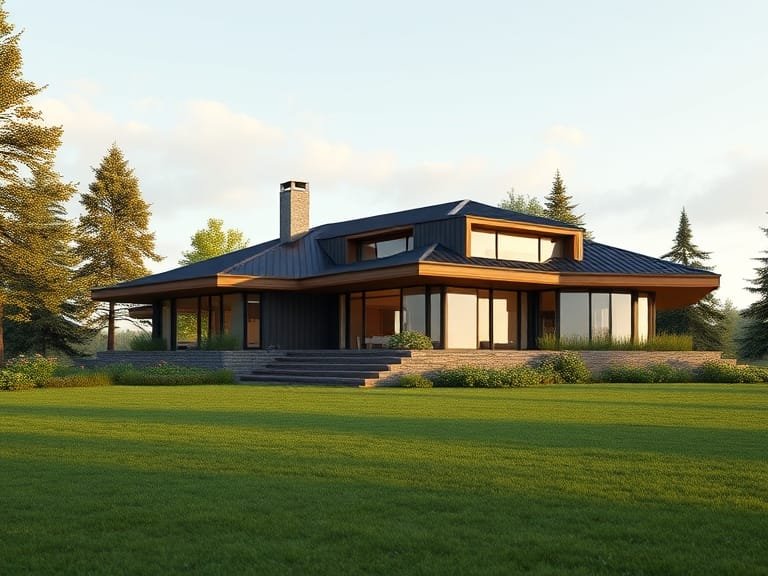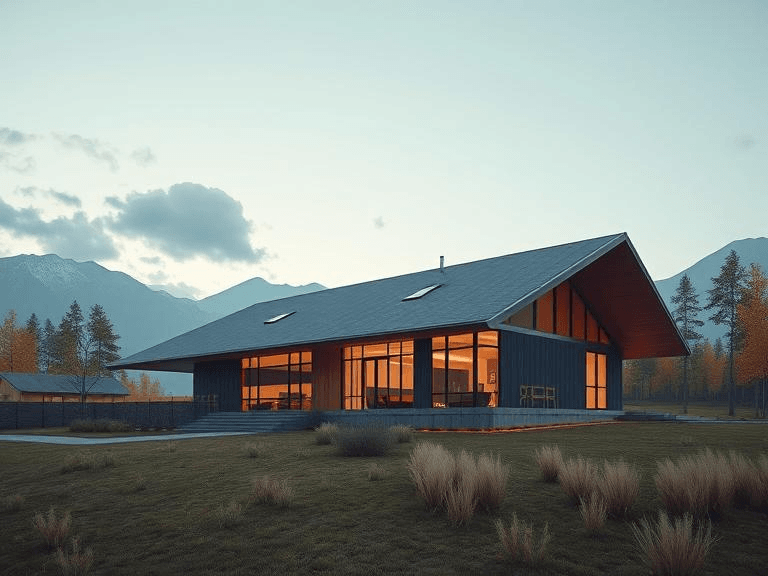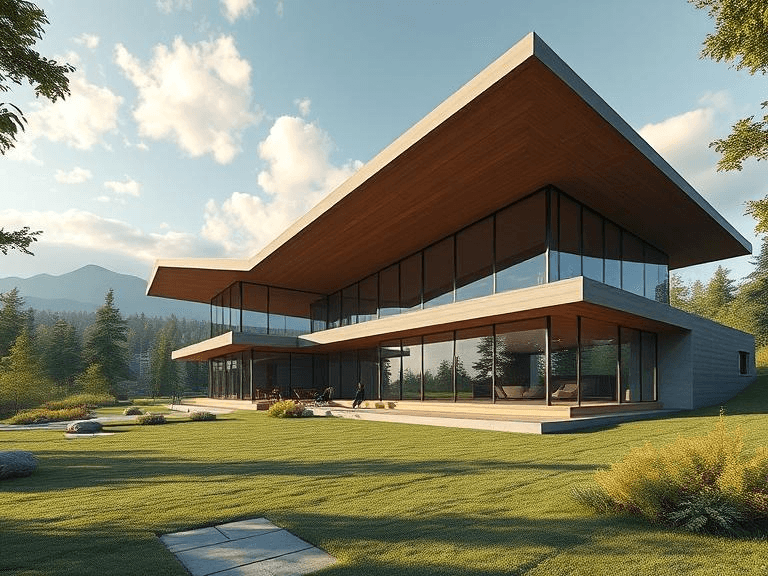
The process of roof replacement is a significant aspect of home maintenance that requires careful consideration from homeowners. A roof serves as a critical protective barrier against the elements, making its integrity essential for the safety and comfort of the household. When the time comes for a roof replacement, understanding the various factors influencing roof replacement costs becomes crucial. Not only does this knowledge enable homeowners to plan effectively, but it also assists in budgeting adequately for such a substantial expense.
Several elements can affect the overall cost of roof replacement. These include the type of materials selected, the complexity of the installation, and the regional labor costs. Different roofing materials exhibit varying price points, performance levels, and aesthetic qualities, which can substantially impact the total cost. For instance, asphalt shingles are typically more affordable than metal or tile roofing. Therefore, discerning the advantages and disadvantages of the various roofing systems is vital for making an informed choice that aligns with both financial limitations and design preferences.
Additionally, regional variations can play a significant role in determining labor costs associated with roof replacement. Areas with high demand for roofing services may experience elevated prices due to competition and the availability of skilled labor. Moreover, unexpected structural issues such as underlying water damage or the need for roof decking upgrades can lead to additional expenses that may not have been anticipated initially. Equipping oneself with an understanding of these factors is fundamental for homeowners, as it directly affects their financial planning when undertaking this major home improvement project.
Types of Roofing Materials
Choosing the right roofing material is a crucial decision that significantly influences the overall cost of roof replacement. Several options are available in the market, each with distinct characteristics, benefits, and drawbacks. Among the most popular roofing materials are asphalt shingles, metal roofing, tile, and slate, each varying in cost, durability, and aesthetic appeal.
Asphalt shingles are perhaps the most widely used roofing material in North America due to their cost-effectiveness and ease of installation. They typically cost less than other materials, making them an attractive option for homeowners on a budget. However, they have a shorter lifespan, usually lasting about 20 to 30 years, and may require more frequent replacements, thereby increasing long-term costs.
Metal roofing, consisting of materials such as aluminum or steel, is gaining popularity for its durability and energy efficiency. While the initial investment is higher compared to asphalt shingles, metal roofs can last over 50 years and offer superior protection against weather elements. They come in various styles and colors, providing aesthetic flexibility. Nevertheless, potential noise during rain or hail can be a drawback for some homeowners.
Tile roofs, made from clay or concrete, are known for their longevity and resistance to extreme weather conditions. They provide a distinctive appearance, enhancing a home’s curb appeal. However, the weight of tile can necessitate additional structural support, thus increasing replacement costs. Tile roofs can also be more expensive upfront, yet their longevity may justify the investment over time.
Lastly, slate roofing is esteemed for its natural beauty and exceptional durability. Known for its lifespan of over a century, slate is one of the most long-lasting roofing materials available. However, the high cost of materials and labor can make slate less accessible for many homeowners. Understanding the pros and cons of each type of roofing material is essential for making an informed decision that aligns with budget and aesthetic preferences.
Roof Size and Complexity
The size and architectural complexity of a roof play pivotal roles in determining the overall cost of roof replacement. A larger roof requires more materials, which naturally leads to higher costs. For instance, the square footage directly correlates to the amount of shingles, underlayment, and other materials needed to cover the surface adequately. Additionally, larger roofs often entail extended labor hours for installation, further increasing the expense.
Roof pitch, or slope, is another critical factor influencing replacement costs. Steeper roofs typically require special techniques and safety measures during installation, as well as additional materials to ensure proper weatherproofing. The risks associated with steep pitches can necessitate higher labor costs due to the expertise and precautions required to complete the job safely.
Moreover, the presence of multiple architectural features such as valleys, ridges, and dormers adds layers of complexity to a roofing project. Each valley may require the installation of additional flashing and materials to prevent leaks, while ridges often come with specific cap shingles that can increase material costs. Dormers not only add to the square footage but also present unique challenges, as they necessitate careful integration with the rest of the roofing system, influencing both time and labor costs.
Overall, when evaluating roof replacement expenses, it is essential to consider both size and complexity. Homeowners who wish to gain a clear understanding of potential costs should consult with roofing professionals to assess their specific architectural features thoroughly. This evaluation enables accurate estimates and helps homeowners better prepare financially for their roofing projects.

Labor Costs: Skilled Labor in Roof Replacement
When determining the overall costs associated with roof replacement, labor expenses are a significant consideration. The skill level required for various roofing systems significantly impacts labor costs. Skilled laborers are essential for the successful installation of roofing materials that ensure durability and adherence to safety regulations. Therefore, engaging qualified professionals not only influences direct labor costs but also affects the longevity and performance of the roof.
Geographical location plays a crucial role in the variation of labor rates. In urban areas, for instance, the demand for skilled roofing contractors often exceeds supply, leading to higher wages. Conversely, rural areas may experience lower labor rates due to a larger pool of available workers and reduced demand. Additionally, local building codes and regulations can affect labor practices and costs, as skilled laborers must comply with specific standards that may require additional training or certification.
The complexity of the roofing system directly influences the time required to complete the job. More intricate systems, such as slate or tile roofs, necessitate precision and a higher level of craftsmanship compared to simpler asphalt shingles. Consequently, these intricate projects often lead to increased labor costs due to the extended time required and the enhanced skill set needed for proper installation.
Furthermore, labor costs can be affected by seasonal fluctuations and market conditions. During peak seasons, when many homeowners opt for roof replacements, labor costs may rise due to high demand. In contrast, during off-peak times, contractors may lower their rates to attract clients. Overall, understanding the role of skilled labor in roof replacement costs is vital for homeowners to budget accurately and ensure satisfactory project outcomes.
Timing and Seasonality
When planning a roof replacement, understanding the impact of timing and seasonality is crucial for budget considerations. The roofing industry experiences distinct peak seasons, which can significantly influence labor costs and overall price estimates. Typically, the busiest times for roofing projects fall during late spring and summer months, as the weather tends to be more favorable for construction works. During these periods, demand for roofing services escalates, often leading to increased costs due to the higher availability of skilled labor and materials.
Conversely, attempting to schedule a roof replacement in the fall and winter may present unique challenges. Adverse weather conditions, such as rain and snow, can cause project delays and disrupt planned timelines. Contractors may have to allocate fewer resources during these seasons due to potential safety hazards and material shortages caused by colder temperatures. Consequently, this could result in a more unpredictable cost structure for roofing projects. Homeowners should be mindful that opting for off-peak seasons might yield cost savings; however, they must also be prepared for potential weather-related interruptions that could impact the completion of their project.
Moreover, while timing is essential, it is important to understand that roof replacement costs can fluctuate based on regional climate patterns. For instance, areas prone to heavy rainfall or extreme weather events may need to factor in additional expenses related to protective measures to safeguard ongoing projects. Timely awareness of these seasonal variations will empower homeowners to make informed decisions regarding the optimal time for their roof replacements. In conclusion, as one navigates the complexities of roof replacement costs, being conscious of the seasonal dynamics and their repercussions alike will serve to facilitate a more cost-effective and efficient roofing experience.
Roof Inspection and Structural Repairs
Before embarking on a roof replacement project, it is crucial to conduct a thorough roof inspection. This initial assessment allows homeowners to identify existing issues that may need attention before or during the replacement process. Roofing experts typically evaluate the integrity of the roofing material, the condition of flashing, and any signs of water damage or decay in underlying structures. An accurate roof inspection plays a significant role in determining the overall costs associated with replacing your roof.
Structural repairs can significantly influence roof replacement costs. Common issues discovered during inspections may include compromised decking, rotting rafters, or even structural misalignment. If any of these underlying structural problems are identified, they must be addressed before the new roofing material can be applied. For instance, replacing damaged plywood or reinforcing weak trusses can incur additional costs that may catch homeowners off guard. It is advisable to factor in these potential expenses when budgeting for a roof replacement to avoid financial surprises later on.
The complexity and extent of the needed repairs can vary based on a range of factors, including the age of the roof, local weather conditions, and past maintenance practices. For example, a roof that has been properly maintained over the years is less likely to incur extensive structural issues. In contrast, a roof that has suffered neglect may require considerable attention and repairs, thus elevating the total expenditure. Therefore, homeowners should ensure they allocate sufficient funds for repairs that might be required following a comprehensive inspection.
In conclusion, a thorough roof inspection is a fundamental step in the roof replacement process. By addressing structural repairs upfront, homeowners can make informed decisions and effectively manage their budget, ensuring a smooth and successful roof replacement project.
Permits and Disposal Fees
When planning a roof replacement, homeowners often concentrate on material and labor costs, overlooking other essential expenses that can significantly influence the overall budget. One of these costs involves acquiring the necessary permits for the project. In many regions, local governments require permits to ensure that the work complies with established building codes and safety regulations. The cost of such permits can vary widely depending on location, the complexity of the project, and the specific guidelines imposed by the local authorities. Therefore, it is crucial for homeowners to research and understand the permit requirements in their area to avoid unexpected financial burdens.
Another essential financial consideration in the roof replacement process is the disposal fee for old roofing materials. During a roof replacement, the existing roof must be removed, and responsibly disposing of these materials can incur additional costs. Many municipalities have regulations regarding waste disposal, especially concerning hazardous materials like asbestos-containing shingles or lead paints. Disposal fees can also encompass transportation costs if the debris need to be taken to a specialized waste facility. Homeowners should inquire about these expenses in the early stages of their planning, as they can add a notable amount to the overall project cost, often ranging significantly based on materials and refuse volume.
Ultimately, when budgeting for a roof replacement, it is advisable to account for the entire spectrum of expenses, including permits and disposal fees. By acknowledging these often-overlooked costs, homeowners can create a comprehensive financial plan that ensures the project proceeds smoothly and without unexpected financial strain. Comprehensive planning will lead to informed decision-making, leading to a successful roofing project within the desired budget.
Insurance and Warranties
When considering a roof replacement, it is essential to understand how insurance claims and warranties can significantly impact the overall costs involved. Homeowner’s insurance is a critical aspect, as many policies cover damages from issues such as storms, fire, or vandalism. Before embarking on a roofing project, homeowners should carefully review their insurance policy to determine the extent of coverage provided for roof repairs or replacements. In some cases, policies may include stipulations on claims and the associated deductibles, which can directly affect out-of-pocket expenses.
It is advisable to contact the insurance provider to discuss any necessary documentation required when filing a claim for roof damage. This might include photographs, estimates, or reports from a roofing contractor. Understanding these requirements can streamline the claims process and ensure that homeowners receive fair compensation for roofing repairs or replacements.
Moreover, checking for warranties associated with the roofing materials and the installation process is equally important. Manufacturer warranties typically cover defects in materials and can range from a few years to several decades. Additionally, contractors may offer workmanship warranties, guaranteeing the quality of their installation for a specified period. Homeowners should inquire about the types of warranties available and interpret the fine print to understand what is included and what may void the warranty—like improper maintenance or lack of inspections.
In light of this, it is prudent for homeowners to document all communications and maintain records of any insurance claims and warranty information. The combined knowledge of insurance policies and warranties enables homeowners to make informed decisions and mitigate unpredictable expenses during a roofing project. Ultimately, understanding these elements can lead to substantial savings and peace of mind, creating a strong foundation for a successful roof replacement.
Conclusion: Making Informed Decisions on Roof Replacement
In this blog post, we have explored the various factors that influence roof replacement costs. Understanding these elements is crucial for homeowners contemplating a roofing project, as it equips them with the necessary knowledge to make informed decisions. Key factors include the type of roofing material, the complexity of the roof design, the geographical location, and the labor expenses involved in the replacement process. Each of these components plays a vital role in determining the overall cost of roofing services.
Homeowners should pay particular attention to the different types of roofing materials available. Options such as asphalt shingles, metal, tile, and wood each come with distinctive price points and maintenance requirements. Additionally, the roof’s slope, pitch, and overall architectural design can impact labor costs and the time required to complete the job. By comparing the advantages and disadvantages of various materials and designs, homeowners can select options that not only fit their budgets but also suit their aesthetic preferences and durability requirements.
Moreover, geographic location is an influential factor in pricing. Different regions may experience varying material costs, labor rates, and even seasonal timing that impacts affordability. Homeowners are encouraged to seek multiple quotes from reputable roofing contractors to ensure they receive competitive pricing. By doing so, they can also gauge a contractor’s level of expertise and the quality of materials offered, which are critical for long-term satisfaction with their roofing choice.
Ultimately, thorough research and a proactive approach are essential when considering a roof replacement. By understanding the intricacies that influence costs, homeowners can navigate the process with confidence, ensuring they make decisions that align with their financial plans and long-term home improvement goals.


